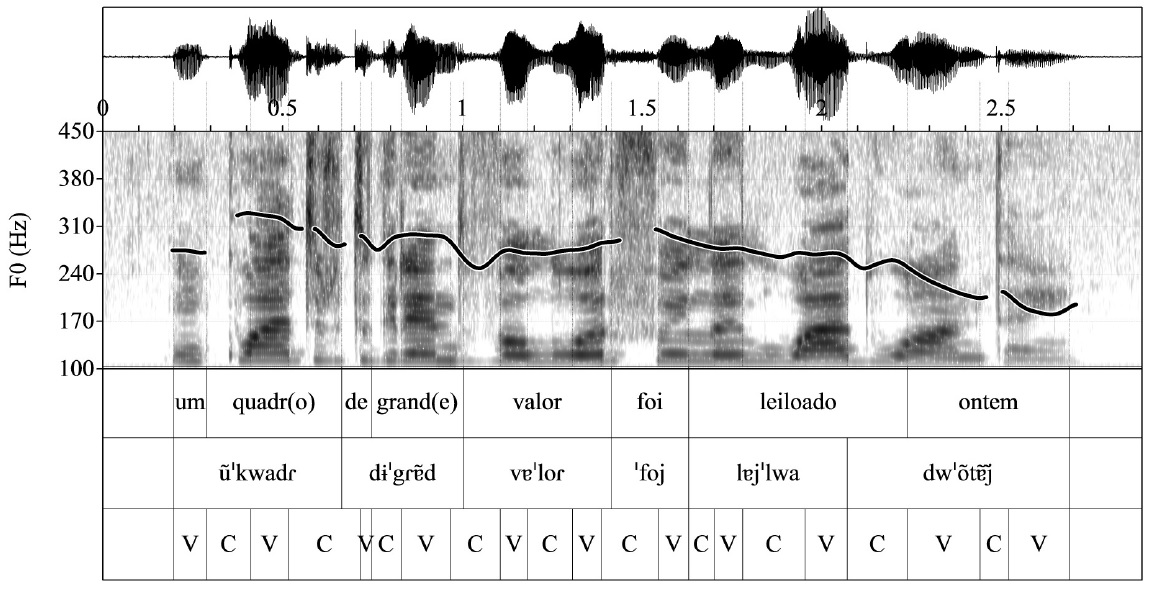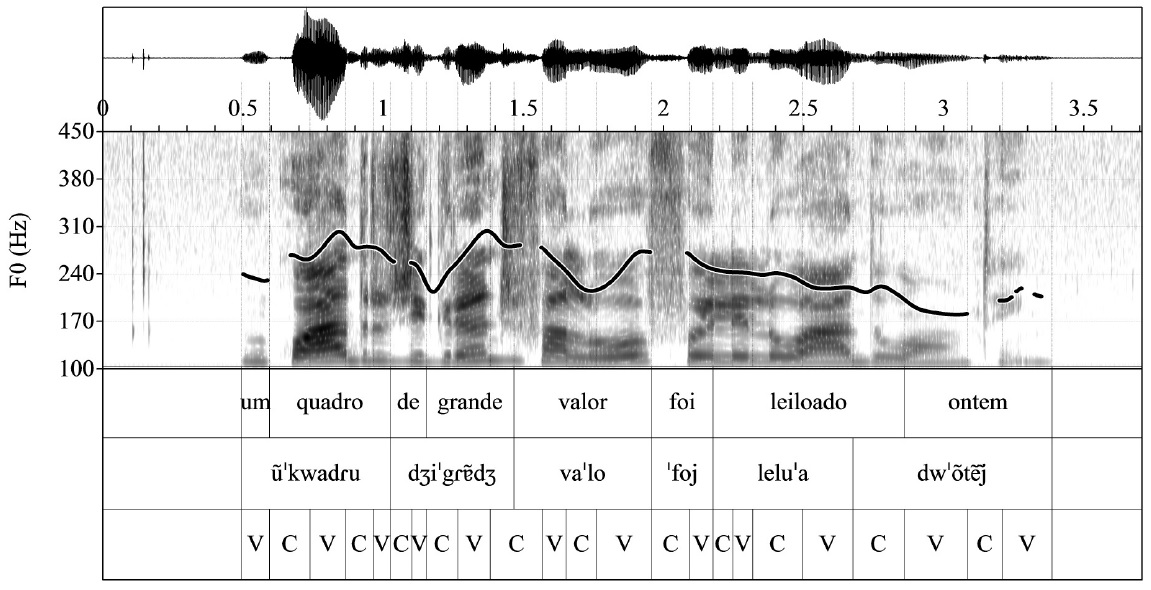Tools for the transcription of Portuguese prosody
Beyond Intonation
Rhythm
The traditional view of linguistic rhythm classifies languages into one of three rhythmic groupings: syllable-timed languages, in which the timing regularity is based on syllables, like in most Romance languages; stress-timed languages, in which the timing regularity is based on interstress intervals, like in Germanic languages; and mora-timed languages, in which the timing regularity is based on morae, as in Japanese (Pike 1945, Abercrombie 1967). This view has been more recently combined with an approach to linguistic rhythm, whereby rhythmic distinctions are seen as resulting from the presence/absence of particular phonological and phonetic properties in a given linguistic system (Dasher & Bolinger 1982, Dauer 1983, 1987, Nespor 1990).
Portuguese rhythm has been generally described as showing mixed properties, although with differences across Portuguese varieties. In the acoustic dimension, differences have between shown between European and Brazilian varieties, as well as within European varieties. Interestingly, EP and BP seem to be perceived as syllable-timed on the basis of temporal properties alone. However, when intonation is present, EP and BP are perceived as rhythmically distinct, thus showing the contribution of intonational features, namely the distribution of tonal events, to the perception of rhythm.
For further information on rhythm in Portuguese, see: Frota & Vigário 2001; Frota, Vigário & Martins 2002; Barbosa, Viana & Trancoso 2009; Frota et al. 2012; Cruz & Frota 2014.
Rhythm
The traditional view of linguistic rhythm classifies languages into one of three rhythmic groupings: syllable-timed languages, in which the timing regularity is based on syllables, like in most Romance languages; stress-timed languages, in which the timing regularity is based on interstress intervals, like in Germanic languages; and mora-timed languages, in which the timing regularity is based on morae, as in Japanese (Pike 1945, Abercrombie 1967). This view has been more recently combined with an approach to linguistic rhythm, whereby rhythmic distinctions are seen as resulting from the presence/absence of particular phonological and phonetic properties in a given linguistic system (Dasher & Bolinger 1982, Dauer 1983, 1987, Nespor 1990).
Portuguese rhythm has been generally described as showing mixed properties, although with differences across Portuguese varieties. In the acoustic dimension, differences have between shown between European and Brazilian varieties, as well as within European varieties. Interestingly, EP and BP seem to be perceived as syllable-timed on the basis of temporal properties alone. However, when intonation is present, EP and BP are perceived as rhythmically distinct, thus showing the contribution of intonational features, namely the distribution of tonal events, to the perception of rhythm.

|

|
|---|---|
|
Original production: |
Original production: |
| Filtered production with F0: |
Filtered production with F0: |
| Filtered production without F0: |
Filtered production without F0: |
For further information on rhythm in Portuguese, see: Frota & Vigário 2001; Frota, Vigário & Martins 2002; Barbosa, Viana & Trancoso 2009; Frota et al. 2012; Cruz & Frota 2014.




